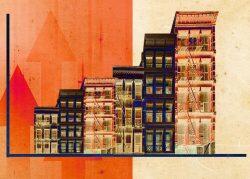The pandemic unleashed unprecedented threats to New York City’s commercial properties, but the latest estimate from the city suggests the buildings have weathered the storm.
Mayor Eric Adams’ preliminary budget includes an estimate of nearly $301 billion for the city’s commercial properties for the 2022-23 fiscal year, Crain’s reported. While that’s below the estimated $326 billion pre-pandemic value, it still marks a retaining of 92.3 percent of their value.
The estimate is also a sizable boost from last year’s of only $269 billion for the 2021-22 fiscal year, 11.7 percent below the latest estimate.
“The city’s overall property valuations have come in above pre-pandemic highs three years sooner than expected,” said Rahul Jain, deputy state comptroller, speaking of all property values to Crain’s. “By any measure, I think that’s a sign of optimism.”
Not every commercial real estate sector experienced the same boost of positivity in estimated values. Offices, retail properties and hotels still struggled to hang on to their value against the weight of the pandemic.
Read more


The preliminary budget shows office properties have lost 7 percent of their value in the last two years, dropping from $172 billion to $160 billion, according to Crain’s. Retail properties have declined 11.9 percent, from $63.8 billion to $56.2 billion.
Hotels were hardest-hit as many were forced to shutter after tourism dried up in the early days of the pandemic. The properties still have a long road to recovery ahead, as their estimated value declined a whopping 19.6 percent, from $32.7 billion to $26.3 billion.
Joy Construction principal Eli Weiss is among the skeptics of the commercial property values in the preliminary budget.
“It’s hard for me to believe with where occupancy rates are for office and hotels and retail that 92% is the correct number, but it’s also a question of where you’re looking at it,” Weiss told Crain’s.
Overall, all properties in the city were valued at $1.4 trillion, 2.1 percent above pre-pandemic levels. Tax revenue growth was projected at $726 million based on higher-than-expected property tax values.
[Crain’s] — Holden Walter-Warner
